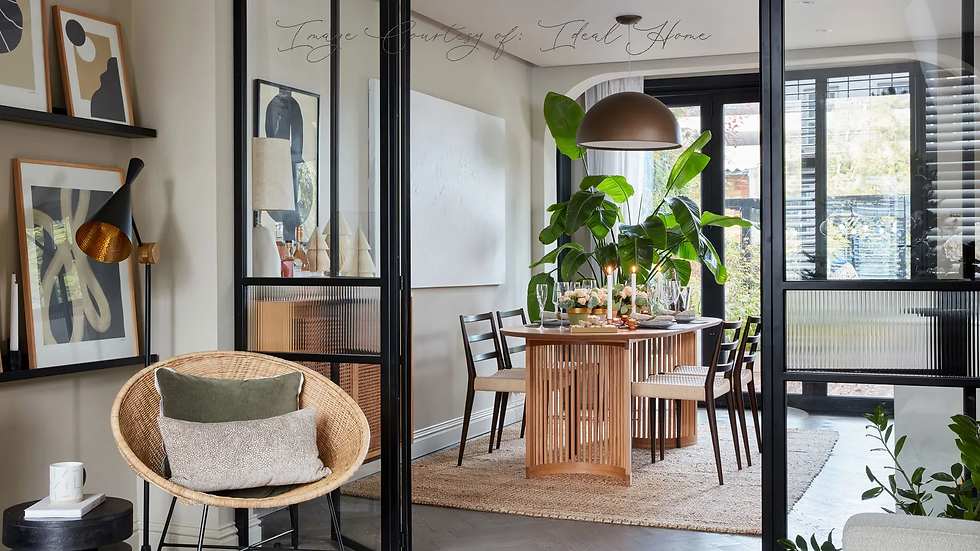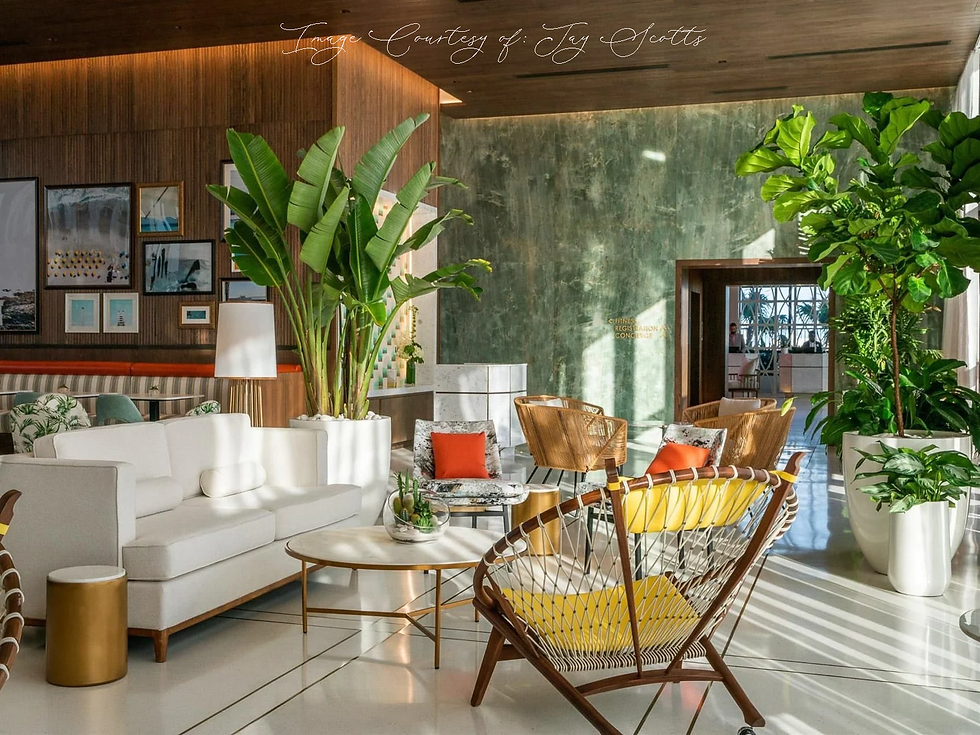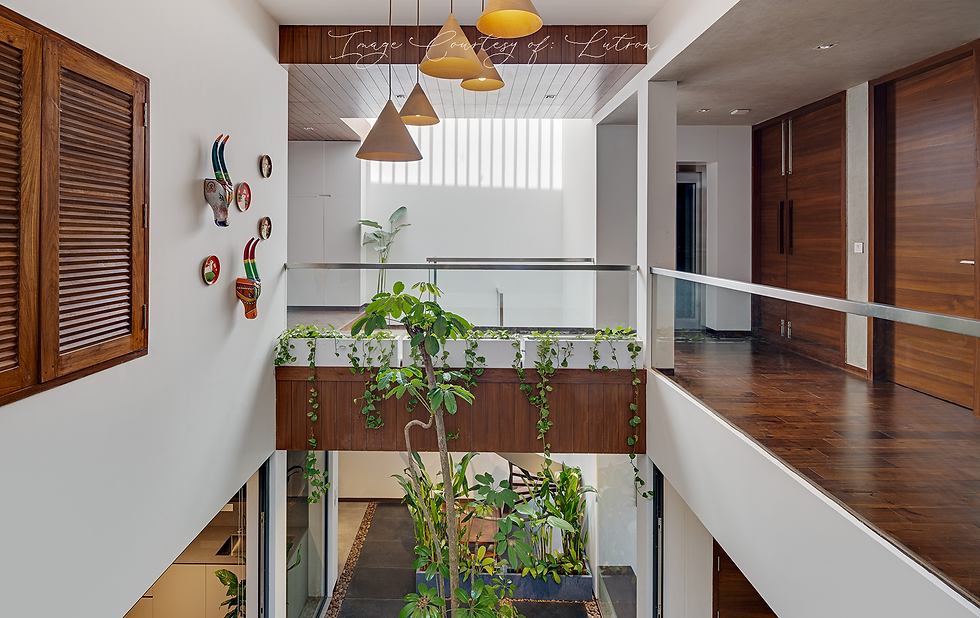Biophilic Design: Why bringing the Outdoors in, is more than just a trend
- Lucy Winterwood

- Aug 15
- 3 min read
Written by Chloe Grace & Lucy Winters-Underwood, founder of Lucy Winterwood Interior Design Studio. Serving St Albans, Harpenden, Hertfordshire & North London.
Step into a room filled with lush greenery, the warmth of natural wood, and sunlight streaming through wide windows, and you may notice an immediate shift—a sense of calm, comfort, and clarity. That feeling is no accident. It’s the essence of Biophilic Design: an approach to interiors that seeks to reconnect us with nature in the places where we live, work, and recharge.
With most of us spending the majority of our time indoors, our innate need for contact with the natural world hasn’t faded—it’s simply been left unfulfilled. Biophilic Design bridges that gap, creating spaces that nurture both our senses and our well-being.

What is Biophilic Design?
The term biophilic literally means ‘love of life’. In the context of design, it goes beyond adding a few potted plants. It’s about crafting environments that allow us to experience nature indoors.
Picture the soft glimmer of sunlight filtering through sheer curtains, the gentle murmur of a tabletop fountain, or the feeling of being wrapped in a cozy reading nook surrounded by cascading greenery.
Biophilic Design is as much about how a space feels as how it looks—an immersive connection to the natural world.

Why It Works—And Why It’s Here to Stay
Biophilic Design isn’t just beautiful; it’s backed by research. Studies consistently show that integrating natural elements into indoor environments can:
Reduce stress and anxiety
Improve mood, concentration, and creativity
Support physical health and recovery
Boost overall workplace productivity
It’s easy to see why. Humans evolved in nature, not beneath fluorescent lights, and our bodies and minds still respond best to environments that reflect that origin.

Six Ways to Introduce Biophilic Design Into Your Space
1. Maximize Natural Light
Draw back the curtains, opt for light-filtering fabrics, and use mirrors to amplify daylight. Sunlight doesn’t just brighten a room—it energizes and uplifts.
2. Embrace Greenery
Layer plants of varying heights and textures: from tall, sculptural palms to trailing ivy and compact succulents. Beyond beauty, many houseplants also purify the air.
3. Incorporate Natural Materials
Wood, stone, rattan, clay, linen—these materials add authenticity, warmth, and texture that synthetic alternatives can’t replicate.
4. Introduce Water Elements
If possible, add a water feature—a small fountain, an aquarium, or even the subtle sound of flowing water—to create a sense of tranquillity.
5. Choose an Earth-Inspired Palette
opt for tones found in nature: moss greens, sandy neutrals, deep ocean blues, and rich terracotta. These colours ground a room and create a calming backdrop.
6. Design With Organic Forms
Soften sharp edges and rigid layouts. Curved furniture, rounded corners, and flowing spatial arrangements mimic the natural world’s gentle, irregular shapes.

Final Thoughts
Nature has always been the ultimate designer. Biophilic Design isn’t about perfection—it’s about creating spaces that feel right. It reminds us that we’re not separate from nature but part of it, and that our environments shape not only our comfort but our overall well-being.
Whether you’re transforming an entire home or simply adding a few leafy plants to your desk, Biophilic Design is an invitation to slow down, breathe deeply, and let the restorative beauty of the natural world into your everyday life—no hiking boots required.








Comments